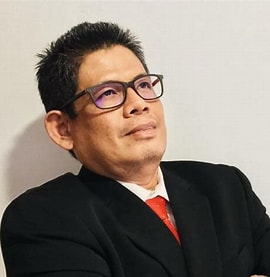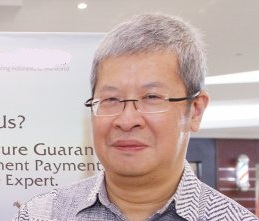Case Document
FAST AND FURIOUS: HOW ANTERAJA DELIVERS ITS PROMISES
STOCK-OUT!
PRIME DAY: A CASE OF FAILURE AND SUCCESS
In the first few hours of July 12, 2016, the Amazon’s “Prime Day” event went through a computer glitch that did not allow customers to add items in their shopping cart – leaving customers unhappy and dissatisfied. The disgruntled customers brought their retaliation to the social media by complaining, making negative comments, using negative hashtags, mentioning Amazon, etc. A new hashtag was created: #PrimeDayFail!
The Prime Day is a self-made occasion created by Amazon only for its members. By paying annual fee as much as $99, members are promised to have deals and bargains, much like the Black Friday or Cyber Monday event. Launched in 2015, the Prime Day events had never been satisfying for customers. In 2015, despite the revenue success, the 2015 Prime Day still left many customers unhappy with the deals – the deals were either sold out, or considered junks or unwanted products. Customers’ retaliation in social media yielded over 40,000 negative mentions. In 2016, Amazon promised to offer better deals than any other Amazon’s event history – yet problems still occurred. While sales were considered higher than the previous year, Amazon still received bad reps from unhappy customers.
Two consecutive fails of Prime Day seem to contradict with what Amazon believes in: customer experience. Customer experience is not just a strategy to Amazon, it is its purpose. Amazon believes that customer experience is far more important than financial reports. On other domains, Amazon is one of the most successful companies when dealing with customer experience, as indicated by continuously creating innovative and effective ways in delivering products its customers. However, the two service failures of its Prime Day event have tarnished its reputation to some extent.
ENERVON-C: EXTENDING PRODUCT LIFE CYCLE
This case can be used for intermediate and advance marketing class. It would be discussing issues the company needs to solve, specifically multivitamine industry company. Generally, every company would want to develop its product and be extended in multivitamine market, thus the company initiates strategies, which is planned and has concern on the product.
Similar initiation also been conducted by PT.Darya-Varia Laboratoria,Tbk with its main product, Enervon-C. This company face issues or dilemma in preserving the existence of Enervon-C in Indonesia multivitamine market. The strategy that might be initiated is commencing Extending Life Cycle Strategies on Enervon-C.
The big challenge is how to extend Enervon-C in current situation without any negative consequence for the brand, product quality perception, and customer loyalty. Company would not only make something new but, how to make the new fresh thing is suitable and fit with market target condition, and marketing environment. Some initiative had been conducted such as new packaging, new product variant, new brand ambasador, and new advertising concept. The interesting point in this case is participant would be invited to evaluate those activities and develop strategic recommendation.
JAKARTA FUTURES EXCHANGE : PRODUCT DEVELOPMENT
It had been more than 10 years since PT. Bursa Berjangka Jakarta (BBJ) was established in 1990. So many expectations was envisioned upon them, hence the 10 years time was a relatively short to do its best to support the national economy. Under a new management team with Managing Director Made Soekarwo, former Bureau Chief of BAPPEBTI, Director Bihar Sakti Wibowo, Managing Director of PT Jalatama Artha Berjangka, and Director Roy Sembel, academics, who were appointed in the annual general meeting of shareholders (RUPS) in June 23, 2010, JFX immediately move forward and fast.
BUILT TO SERVE: THE ART OF STRATEGIC SERVICES OF AN INDONESIAN AD AGENCY DWI SAPTA
Entering the third millennium the landscape of advertising industry was changing rapidly. Consumer fragmentation and media proliferation inline with the development of information technology had been changed the meaning of advertising. Consumers were changed, and it was not an easy job to persuade them to buy only with the help of advertising. The traditional 15 percent media commission was gone when the multinationals media specialist only ask for one to four percent. The multinationals ad agencies, labeled as Brand or Creative Agency, now working for their clients based on retainer or project fee. This condition was brought many difficulties to Indonesia ad agencies that operating as a full services agency with the 15 percent media commission model. As one of the Indonesian ad agency, Dwi Sapta must smartly developing and delivery its services to keep their clients happy with them.
Dwi Sapta Integrated Marketing Communications was started with a photography studio in 1981. From the beginning, the founder Aloysius Adji Watono showed his responsibility for the products he delivered. He chooses Porter’s low cost focus strategy that means Dwi Sapta must deliver services with a competitive price bracket, and focus on a specific group of customers. Dwi Sapta will only produce advertising that will bring success to the client’s products. So the ads will always start from the marketing objective of the clients and the consumer insight about the products.
Dwi Sapta was growing with its local clients that much smaller compare to big budget clients like Unilever, Toyota, or Nestle. They had believed in Dwi Sapta because they were too hesitant to go to the big agencies. Psychologically, they had feel convenience to deal with small agency that will charge them lower compare to the big guys. They also think that small agency will give them more attention, understanding, and the most important one, have the same level of aspiration.
The 1998 reform brought the multinationals ad agencies to the surface and they took off their local name. In 1997, just days before the crisis erupted, Chairman of WPP Martin Sorrel bought AdForce/JWT and solely changed it to JWT Indonesia. Then almost all of the big guys from Madison Avenue were boldly present in the country.
The reform also changed the consumer and media in Indonesia. Consumer has more freedom to follow their specific lifestyle. For instance, the tattoo or piercing that before was ethically forbidden now a lifestyle among many people, male or female.
To accommodate the variations of consumer needs and demands, new products and services keep coming. The same pattern was happened with media that will happy to serve a specific audience with specific products or services. With no obligation to have publishing permit, the proliferation of print media flourishes and gave more option for consumer to choose. Editorial content now open to all aspects, from news, lifestyle, sports, business, sex, to religion. Broadcast media also proliferated, with national TV station growth to 11 channels, and more than hundred local TVs. The same pattern also happens to radio.
Within this dynamic market, Dwi Sapta must strategically choose its direction to win the competition. The question is what kind of marketing strategy they must choose to win the battle?
BKM IN 2002, PRE-PAID ELECTRONIC BALANCE TOP-UP SERVICE WITH EDC (A)
BKM had initiated and orchestrated all the business relationships towards the successful launch and operation of the Telkomsel Autorefill service. The project was initiated back in March 2002 when BKM showed the capability to deliver the voucher-less business to Telkom B2B Project. As a pioneer of providing simPATI prepaid service, Telkomsel faced the challenge to provide huge distribution channels of its prepaid air-time. Jatis, another potential partner for mobile banking solution, presented the proposal to Telkomsel to address the challenge, at the same day when BKM through Telkom B2B Project presented Autorefill Solution to Telkomsel. At the end, Telkomsel’s Marketing Director, Mr. Woerjanto, then agreed to proceed with BKM solution in a five years contract. After long process, a back-to-back contract agreement between BKM to Telkom, and Telkom to Telkomsel was signed on November 25, 2002. Telkom B2B Project was set to prepare a new business on electronic transaction. At that time, Telkom was eager to work on any new business development on non-telephony applications, outside their normal traditional telephony services. Through indirect business relationship, whereby BKM’s proposal sealed with Telkom brand, BKM secured the project over Telkom domination (Telkom had majority ownership share in Telkomsel, 65%). Telkom provided the entire electronic refill application hosting and hardware infrastructure for running the data center operation for Telkomsel Autorefill service.
BKM IN 2002, PRE-PAID ELECTRONIC BALANCE TOP-UP SERVICE WITH EDC (B)
Back in 2002, BKM was just another company in Indonesia struggling to survive and just tried to keep-up to fulfill its operational expenses. It was just only from one project, the BKM – Telkom agreement for the Telkomsel Autorefill Service had turned BKM into a profitable operation in the following year and subsequently in the next years ahead, up until now (2008).
PT. HOLLITECH: USING INTELLECTUAL CAPITAL TO WIN CUSTOMERS (PART A)
Stefanus Mulianto, Director of PT. Hollitech, was proud of the achievement of PT. Hollitech since the day it was founded. He had reasons for that since his company was the only company that successfully developed applications software for the garment/apparel industry in Indonesia. The latest achievement was shown in late 2005 when the company acquired an Indian IT company. Over the past four years Stefanus Mulianto had been responsible for managing the operations of company as well as its human resources. Once an IT department of a textile/garment conglomerate, PT. Hollitech had grown into a medium-sized international IT services company delivering various solutions to financial institutions, garment, and hospitality industries. Innovation, quality and on-time delivery of IT solutions had always been part of the strategy that Stefanus Mulianto believed was the key driver to PT. Hollitech’s success.









